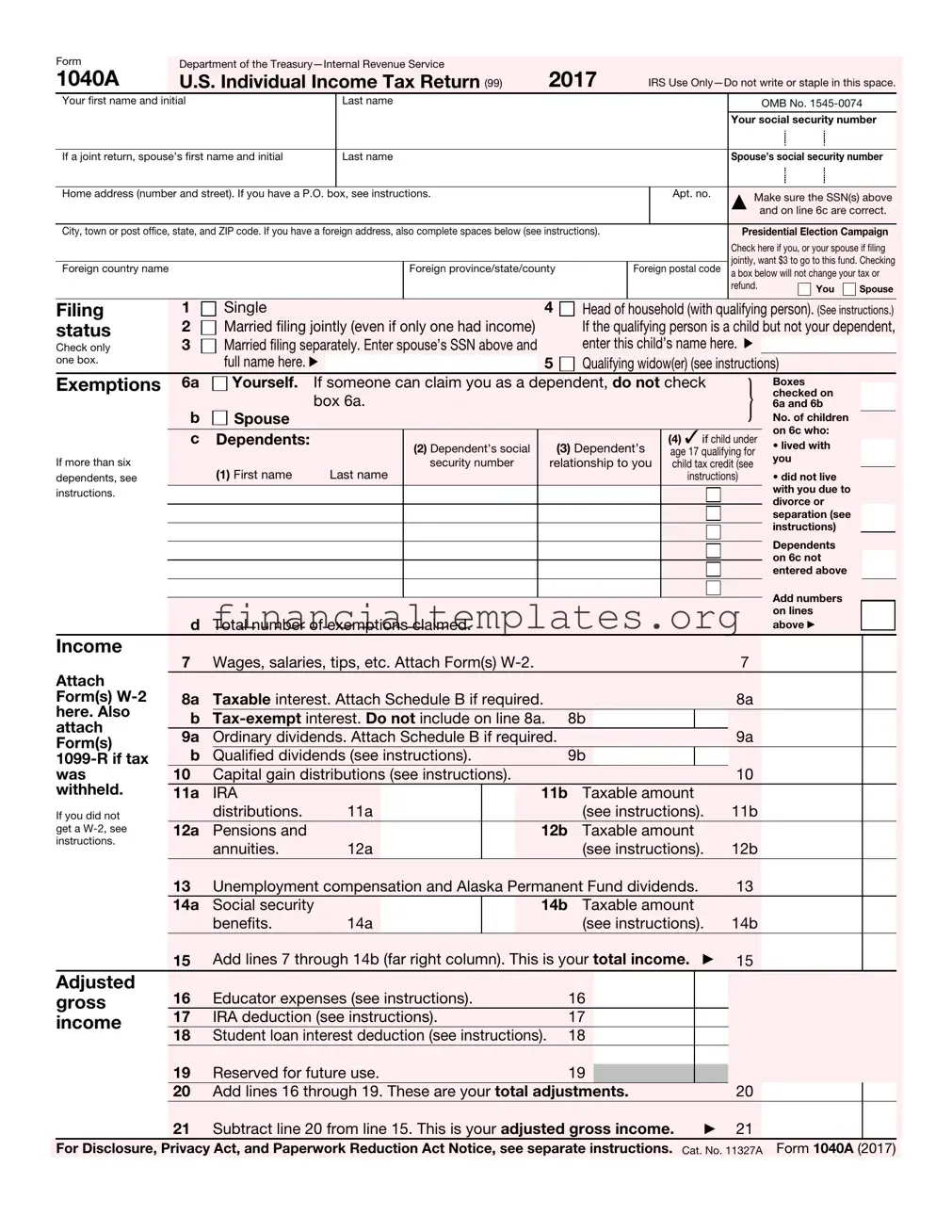The IRS Form 1040 is the first document that bears a resemblance to the IRS 1040A form, particularly in the context of reporting taxable income and deductions. Both forms serve as foundational tools for individuals to calculate their annual tax liability. The IRS Form 1040 encompasses a wide range of financial information, including earnings, taxable interest, and deductions, similar to the 1040A form. However, Form 1040 offers more options for deductions and tax credits, making it suitable for more complex tax situations than the streamlined 1040A.
Form 1040EZ represents another document akin to the IRS 1040A, sharing the objective of simplifying the tax filing process for individuals with uncomplicated financial scenarios. Specifically designed for taxpayers with taxable income below a certain threshold, the 1040EZ limits entries to wages, salaries, and tips, akin to parts of the 1040A. Despite its simplicity, the 1040EZ restricts users more than the 1040A, excluding those who wish to claim any deductions or credits other than the standard deduction and earned income credit.
The Schedule B (Form 1040A or 1040), Interest and Ordinary Dividends, mirrors the 1040A insofar as it addresses specific types of income, namely interest and dividends. This schedule supplements the 1040A by providing a detailed framework to report additional sources of income, essentially enhancing the 1040A's functionality for taxpayers with investments. Similar to the 1040A’s straightforward approach, Schedule B guides taxpayers in summarizing their interest and dividends in a clear, structured manner.
Form SSA-1099, Social Security Benefit Statement, significantly parallels the IRS 1040A, especially regarding the calculation and reporting of social security benefits. Both documents engage with the intricacies of social security income, determining the taxable portion of these benefits. Taxpayers receiving social security benefits must reference their Form SSA-1099 when completing lines 14a and 14b of the 1040A, evidencing the interconnectedness of these forms in managing social security income taxation.
Form 8863, Education Credits (American Opportunity and Lifetime Learning Credits), shares similarities with the IRS 1040A through its focus on tax benefits related to personal investments, in this case, educational expenses. The 1040A allows taxpayers to claim certain education credits directly on the form, much like Form 8863, which is dedicated solely to calculating and claiming these credits. Both forms play crucial roles in facilitating the financial support of taxpayers’ educational pursuits, directly impacting their taxable income.
Finally, Publication 915, Social Security and Equivalent Railroad Retirement Benefits, complements the IRS 1040A form closely. While not a form, this publication provides the detailed guidelines required to accurately calculate the taxable portion of social security benefits, as briefly outlined in the 1040A's instructions. Taxpayers often turn to Publication 915 for a deeper understanding of how to complete relevant sections of the 1040A, making it an essential resource for those navigating the complexities of social security benefit taxation.

